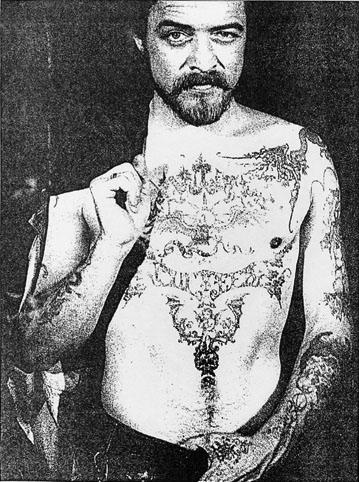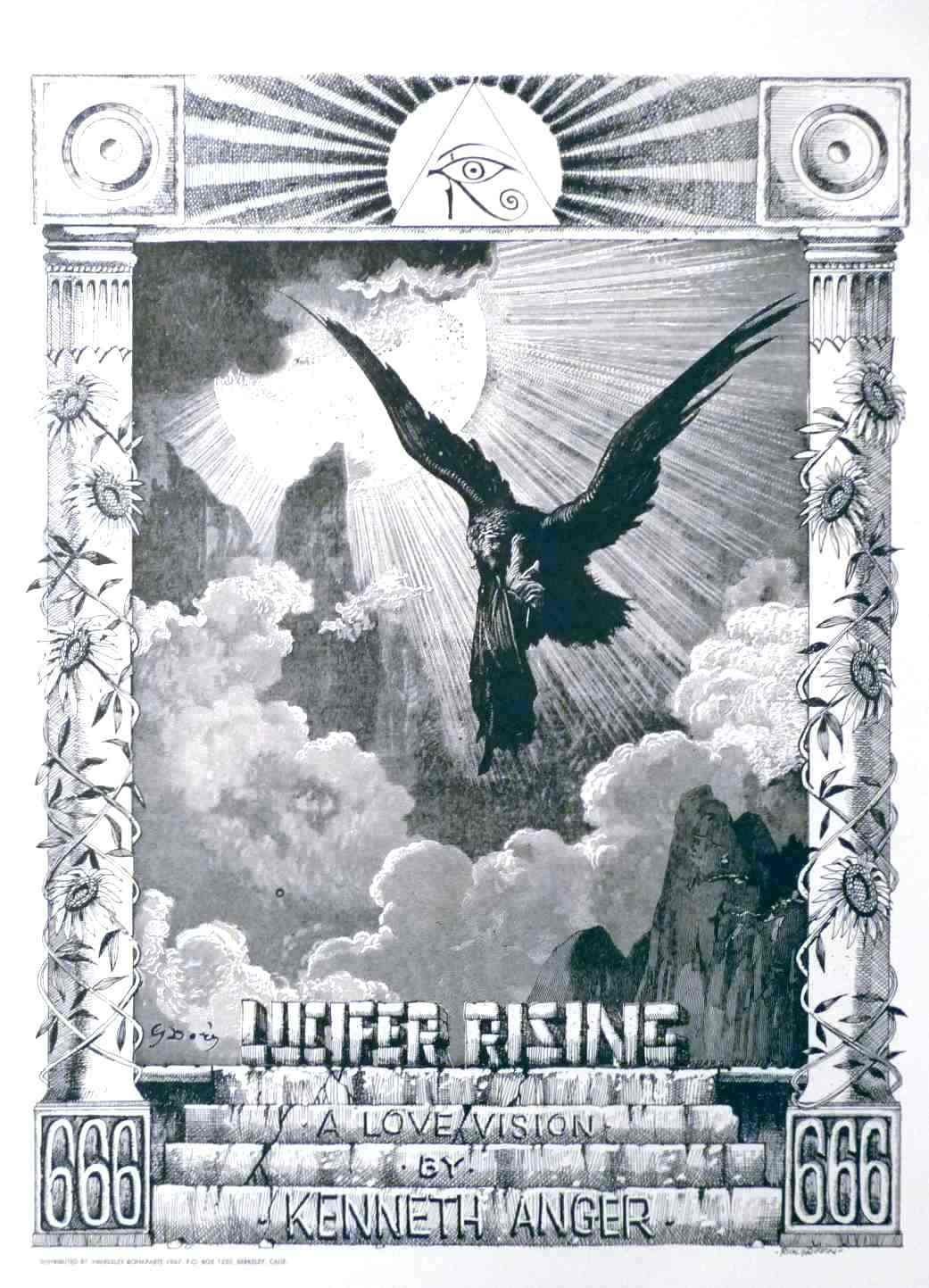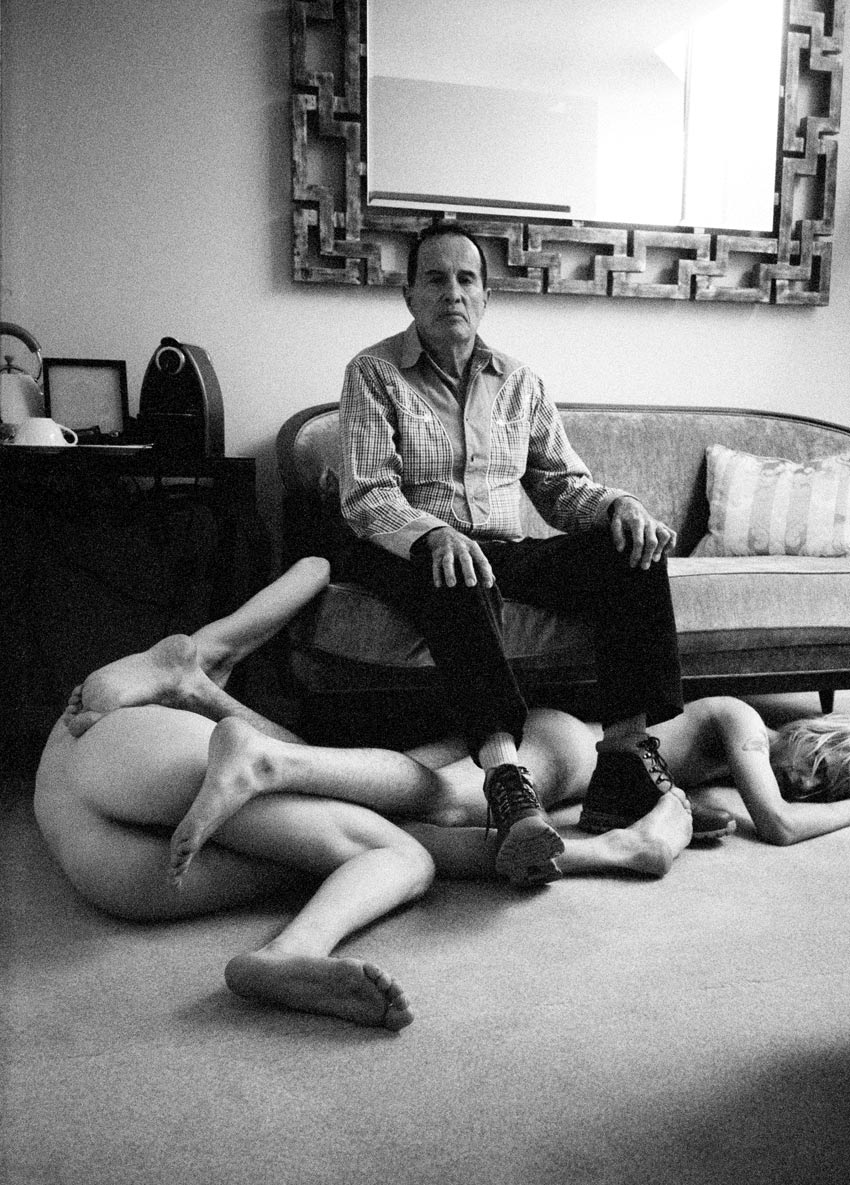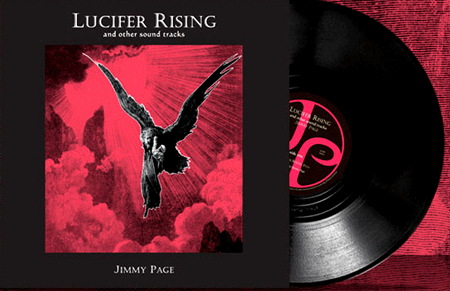Kenneth Anger‘s Lucifer Rising (1972) must be one of the most ambitious independent films made to date. It took over eleven years to complete, with locations spanning the temples of Karnak and the pyramids of Giza in Egypt to Germany’s Black Forest to Stonehenge, as well as India, Iceland, and lots of locations in the United States. Knowing that Anger chose to work mostly by himself, controlling all aspects of film production (his ability to direct, light, photograph, costume, create props, edit and produce is legendary) and working with an extremely modest budget, most of it self-financed, the end result is nothing but astonishing.
The visual inspiration must be traced to Aleister Crowley‘s poem Hymn to Lucifer, which in turn recalls John Milton’s epic poem Paradise Lost (1667). Lucifer is, in both Milton’s, Crowley’s and Anger’s eyes, the representation of beauty and light, the light bearer, the morning star, and so forth… In Gnostic myth, Lucifer was/is a pre-Judeo-Christian deity, identified with the fallen angel cast out of Heaven. The Gnostics worshipped Lucifer as the Herald of the Dawn, the light preceding the sun. This myth was then suppressed by the Catholic Church.
Marquis de Sade held that it was evil that was man’s prime motivation toward pleasure. Baudelaire tried to ”extract beauty from evil”, as did Milton in Paradise Lost and Dante in The Divine Comedy. It was in this symbolic context that Kenneth Anger found inspiration, and as early as 1954, in Inauguration of the Pleasure Dome, Anger explored different psychedelic states of consciousness. In a way, Lucifer Rising is ”with its themes of demonic possession expressed through the loss and recovery of psychic and physical power” (Alice L. Hutchison, Kenneth Anger) the ultimate of Anger’s manifestations, sort of stating that all these themes – the journey, the quest, the beauty, the darkness, the sublime and the psychedelic experience – are related. It’s the perfect combination of everything and nothing – showing another existence different from rational awareness. It’s like dreams that ”attempt to bring order to the unruly emotions and desires repressed by the social constraints of everyday life” (Hutchison). Anger himself consider Lucifer Rising to be the one film, alongside Scorpio Rising (1964), that came closest to his vision.
Robert Haller: ”To watch the film is to become intensely aware of the kinds and qualities of light, of its presence and absence, of its force.”
Before the film’s completion, Anger had this to say:
”The film Lucifer Rising is my answer to Scorpio Rising – which was a death mirror held up to American Culture. […] I call it a love vision, and it’s about love – the violence as well as the tenderness… […] Lucifer is the Rebel Angel behind what’s happening in the world today. His message is that the ‘Key of Joy is Disobedience’.”
When done filming, but not editing:
”Frankly, it’s taken me into some very strange corners… You see, I didn’t think it was about demons or hell, really. I was trying to make a film about the Angel of Light. That was his first name. The Son of the Morning, you see. But now I almost believe what the Bible says.”
Kenneth Anger’s interest in sound led to experimental collaborations with Mick Jagger (creator of the soundtrack for Invocation of My Demon Brother (1969)), Marianne Faithfull (who starred in Lucifer Rising), Jimmy Page (who began composing for Lucifer Rising, but got fired) and the infamous Bobby Beausoleil (whose music appeared in the final re-edited version of Lucifer Rising). Anger argued that rock’n’roll embodied the rebellious spirit of the times.
 As for Lucifer Rising, Anger had 17 hours of film and had been using the film-editing facilities in the basement of Jimmy Page’s Victorian mansion in London to trim it down. One night Anger was ordered by Page’s girlfriend to leave the house. No reason was given for his eviction, and his work was terminated, and so was Jimmy Page’s work on the soundtrack. The media reports of these events led to Beausoleil contacting Anger about making music for the film. Since Beausoleil was held captive in prison for his involvement with the Charles Manson murders, the instruments were delivered by mail order and Anger provided him with the time-sheet for the film. The result is amazing. That Bobby Beausoleil’s last name is roughly translated to ”beautiful sun” is yet another detail related to the concept of light.
As for Lucifer Rising, Anger had 17 hours of film and had been using the film-editing facilities in the basement of Jimmy Page’s Victorian mansion in London to trim it down. One night Anger was ordered by Page’s girlfriend to leave the house. No reason was given for his eviction, and his work was terminated, and so was Jimmy Page’s work on the soundtrack. The media reports of these events led to Beausoleil contacting Anger about making music for the film. Since Beausoleil was held captive in prison for his involvement with the Charles Manson murders, the instruments were delivered by mail order and Anger provided him with the time-sheet for the film. The result is amazing. That Bobby Beausoleil’s last name is roughly translated to ”beautiful sun” is yet another detail related to the concept of light.
Kenneth Anger made his first movie when he was nine years old. When Scorpio Rising was released in 1963 it became the most viewed underground film in history. Anger still didn’t have enough money to truly realize his grand visions, and was unable to complete most of them. ”Money has always been a problem, and it made me give up on a lot of projects”. One of these movies that to my knowledge is still unfinished is a portrait if his friend Elliot Smith. He also made plans for a documentary about the German colony Nueva Germania in Paraguay, which was founded by Nietzsche‘s sister Elisabeth Förster-Nietzsche. According to Anger the place holds a lot of inbreds…

Still to this day, at the age of 85, Anger refers to himself as a thelemite, a follower of the spiritual philosophy Thelema developed by Aleister Crowley. In the 1940’s, Anger started to collect Crowley books and manuscripts, and obviously his collection is huge (probably not as huge as that of Jimmy Page, though, whose collection is rumoured to be the second largest in the world. Page also owns Crowley’s former residence at Boleskin, Loch Ness).
By the way, the Jimmy Page soundtrack is available again, remixed and all that, along with other soundtracks on this beautiful album:


